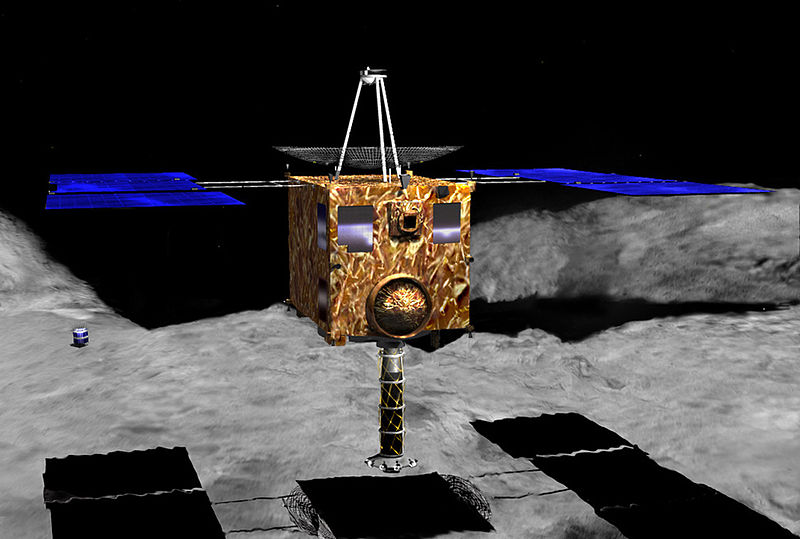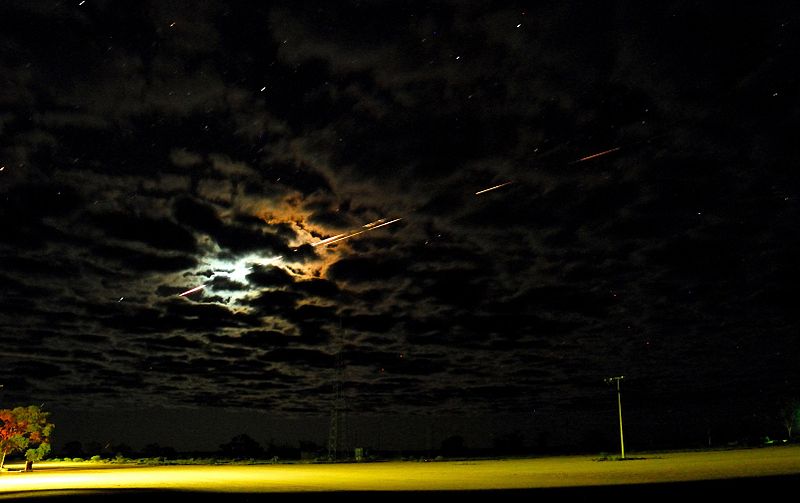By Wes O’Donnell
Managing Editor of In Military, InCyberDefense and In Space News.
This week in 2004, the Japan Aerospace Exploration Agency’s (JAXA) Hayabusa robotic spacecraft received a crucial gravity assist from Earth.
Get started on your Space Studies Degree at American Military University. |
The Hayabusa, Japanese for “Falcon,” was developed to bring a sample of an asteroid back to Earth. Launched on May 9, 2003, from the Kagoshima Space Center, Japan, the spacecraft was put into a transfer orbit to bring it to asteroid 25143, or Itokawa ( technically named 1998 SF36), a 0.3 x 0.7 km near-Earth object.
According to NASA, the ion engines were successfully test-fired between May 27 and the middle of June 2003.
A large solar flare in late 2003 degraded the solar panels. The loss of power available to Hayabusa’s ion engines forced the originally planned early summer 2005 rendezvous with Itokawa to be moved back to September.
Hayabusa hovering above Itokawa. Illustration by J.R.C. Garry. Public Domain.
This week in 2004, Hayabusa flew by Earth at an altitude of 3725 km and received a gravity assist.
Once Hayabusa arrived at Itokawa, it surveyed the asteroid’s surface from a distance of about 20 km. After several aborted attempts to land, Hayabusa finally touched down on the asteroid on November 25, 2005.
Scientific Instrument(s)
– Light Detection and Ranging (LIDAR)
– Near-Infrared Spectrometer (NIRS)
– X-Ray Fluorescence Spectrometer (XRS)
– Wide-view Camera (ONC-W)
– Telescopic Camera (AMICA)
– Target marker
– Sampler and reentry capsule
– Small rover MINERVA
In January 2007, Hayabusa departed the asteroid with its payload and began its return trip to Earth. Then, in June of 2010, the spacecraft released its 40-centimeter-wide capsule before harmlessly burning up as planned in Earth’s atmosphere. The capsule parachuted down to the Woomera Protected Area, the world’s largest test range, in South Australia, where ground teams recovered it the following day.
The re-entry seen from the Woomera Test Range. NASA/Ed Schilling. Public Domain.



Comments are closed.